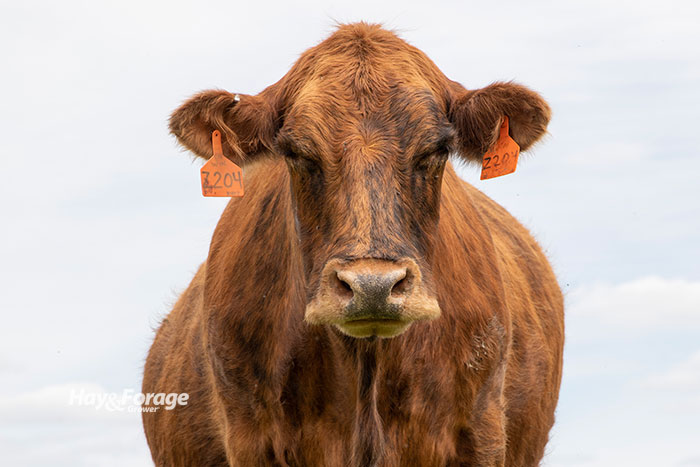Don’t let bloat rock the production boat |
| By Mike Rankin, Managing Editor |
|
|
 Greening spring pastures are generally a welcomed site, especially to those who have been feeding hay all winter. In some cases, those same spring pastures hold the potential for causing frothy bloat in cattle and turning a good day into a devastating one. “Make no mistake, it is a shocking sight to drive past a lush pasture and see cattle with swollen, egg-shaped protrusions from their sides and dead, swollen carcasses,” writes Paul Beck in a recent Oklahoma State University Extension Cow-Calf Corner newsletter. “To avoid this, producers simply need a little education, a plan, and a supplement,” the beef nutrition specialist adds. Beck notes that small grain pastures in his state are currently shorter than normal due to lack of winter precipitation, but that condition will change rapidly once warmer temperatures and spring rains arrive. Fast-growing small grain or legume forage is subject to causing bloat in grazing cattle, and that risk escalates when damage occurs because of spring frost.
“The rapid onset of pasture bloat and the short time window from the occurrence of initial symptoms to death may be the scariest part of this disease,” Beck warns. “Bloat can be an issue on small grain pastures and legume pastures such as clover or alfalfa, impacting calves or mature cows. Death losses can be as high as 15% to 20% of cattle on a pasture. Subclinical bloat may also contribute to production losses,” he adds. The beef nutritionist says that much of the cost associated with bloat is from lost production due to the fear of encountering bloat. A good cereal forage pasture offers the potential for cattle to gain in excess of 2.5 to 3 pounds per day. Beck writes that avoiding these pastures based on a fear of bloat is unreasonable because there are affordable and user-friendly methods for control. Reduce the risk There are several grazing management strategies that can be used to reduce the risk of bloat, according to Beck. Overstocking cattle on pastures to a point that forage intake is limited has the potential to help prevent bloat. That’s because bloat is a bigger issue for cattle on unlimited pasture that can consume a large amount of forage in a short period of time. Where rotational grazing is used, cattle can be placed on pastures after the forages have grown, matured, and have a higher fiber content. More mature forages are less prone to cause bloat. Bloat research using growing calves on bloat-provoking pastures (alfalfa, clover, and wheat pastures) has shown that monensin supplementation decreases bloat cases by 20% and also reduces the severity of bloat. “This option is attractive because ionophores boost average daily gains by 10% for a cost of about 3 cents per day above the cost of the carrier supplement, which is an economic benefit to stocker cattle producers,” Beck explains. Even though monensin lowers the incidence and severity of frothy bloat on pastures, it does not eliminate the issue altogether. Poloxalene (Bloatguard) is a surfactant and works to disrupt the froth, which can form in the rumen and cause bloat. Poloxalene has been proven to be a more effective remedy for frothy bloat than monensin, Beck notes. “Providing poloxalene in a self-fed ingredient such as blocks or in other supplements costs 15 to 20 cents per calf per day, depending on the cost of the supplement,” Beck writes. “If poloxalene is fed only during the period that forages are most bloat provocative, then the total cost of bloat control can be covered by the prevention of the loss of a single animal.” Beck advises to consider using monensin until bloat cases start to appear, then switch to poloxalene. With this strategy, economic benefits can be gained from the improved gains of feeding monensin while also using poloxalene short-term to prevent a severe outbreak of bloat cases. |
